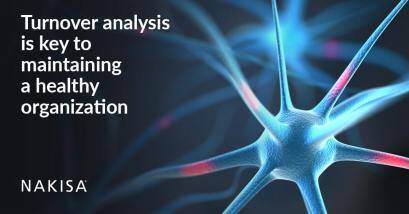As with all other living organisms, enterprise organizations are in a constant state of remaking themselves while also simultaneously growing, changing and adapting to their environments.
In any complex organism, or organization, there is wide range of diversity in the timing, variety and criticality of this ongoing regeneration process. For example, under normal existence, some cells in the human body, such as epidermis or stomach lining, are constantly renewing themselves every week, while others such as bones can take fifteen years or more.
According to the Management Association’s 2016 Turnover Survey the average annual turnover rate for 2016 was 20.3%. This represents an average voluntary turnover rate of 14.9% and involuntary turnover rate of 5.4%. But, as in the human body, the overall turnover rate is not a one-size-fits-all proposition.
Renewing an organization involves a very complex matching game to assure that the required skills, experience and other talent factors are available to fill job openings in a timely fashion to keep the organization functioning optimally and adapting to new external challenges.
Fortunately, our bodies run largely on automatic pilot when it comes to the regeneration and renewal process. However, our organizations do not.
That’s why HR professionals and corporate executives need comprehensive tools to monitor, analyze, and understand turnover activity, optimize retention strategies, and to tune their organizations to be constantly regenerating the right talent and skill sets needed to fill the flow of vacancies.
The first step to success is to accept the fact that piecemeal or ad hoc approaches cannot adequately address the challenges of turnover management, especially in today’s complex global organizations. The old method of trying to gather and analyze turnover data using offline spreadsheets simply is not able to keep up with the dynamically changing and highly complex nature of today’s organizations. It is no longer sufficient to export a static retrospective snapshot of historic turnover data and attempt to use it for predictive purposes. You can’t get a holistic picture of all relevant factors and, even if you could, the situation will have changed by the time you’ve completed the analysis.
In contrast, using a comprehensive enterprise-wide organizational management solution with real-time analysis tools and proactive modeling functions can empower HR leadership to understand, plan for and manage turnover within the organization.
Comprehensive Single-Source-of-Truth Organizational Analytics
Using a unified solution, such as Hanelly by Nakisa, companies can leverage a single-source-of-truth for all organizational analysis and management activities that enables the full spectrum of HR analytics, including turnover analysis, to leverage real-time contextual information for better decision-making.
By looking at turnover issues in context, HR professionals and corporate leaders can clearly see the key factors that are driving turnover and, within the same analytics environment, can model and visualize various scenarios to mitigate turnover impacts and assure organizational health.
Key factors including compensation levels, skill sets, geographic locations, competitive labor markets, benefits, career path incentives, etc. can be viewed as part of the big picture and can also be analyzed individually to determine their impacts on turnover. This unified and integrated analytics approach enables easy aggregation, disaggregation and correlation of different turnover-related factors in combination and/or isolation to understand the potential impacts of mitigation alternatives.
One of the key areas that the unified analytics approach brings to light is the issue of understanding skills vulnerabilities within the organization. This is a critical concern because turnover in some jobs can be much more detrimental than in others. For example, as in the previous analogy with the human body, a 20 percent loss of relatively easy to replace skin cells is less dire than a 20 percent loss of hard to replace brain cells. Companies need to be constantly monitoring their enterprise-wide skills inventory, assessing unmet needs, and exposing vulnerabilities to identify high-risk situations.
Storyboarding Enhances Visualization
Using two-way interfacing with the core HCM system, the comprehensive organizational analytics platform can provide granular and aggregated visibility into key skill vulnerabilities across the whole organization, with modeling scenarios that can help create mitigation measures, such as succession planning, cross-training, relocation options and proactive recruitment activities.
One of the big advantages to using a comprehensive solution is the ability to flexibly model and visualize virtually any set of factors by interactively building “storyboards” within the application. Storyboarding effectively enables decision-makers to quickly bring together various pieces of information relevant to a specific issue, thereby decluttering the analysis and focusing on the relationships between key variables.
For example, the user can pull data from the HCM using a variety of criteria such as, titles, tenure, compensation, key skills, certifications, geographic locations, etc., and combine it with org charts, lists, dashboards, etc. Instead of jumping in and out of different applications, databases and modules, to find pieces of the picture, the storyboarding function enables users to assemble everything within a single interrelated view to enhance clarity.
Multiple storyboards can be created to help understand different alternatives, which can be saved and shared to enhance collaboration and decision-making processes. Storyboards also can be used as a baseline guide for monitoring and measuring the change process by updating various elements in the storyboard.
In summary, it’s important to recognize that turnover in any organization is a natural phenomenon that will never be eliminated but will always need to be managed. The key to managing turnover is putting in place comprehensive organizational analysis solutions that allow you to understand the contributing factors and vulnerabilities, along with integrated modeling, visualization and storyboarding tools to develop, evaluate and implement effective counter measures.






